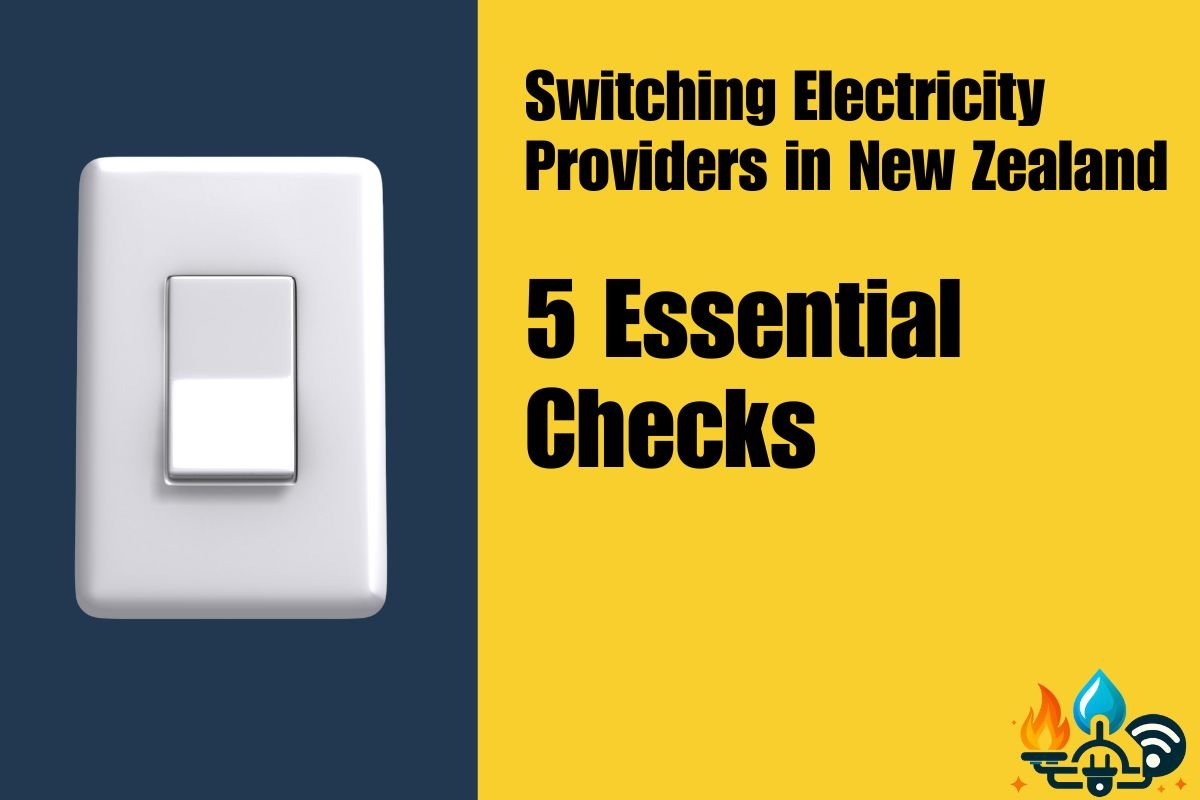Switching electricity providers can be a savvy move for many households and businesses in New Zealand, potentially leading to significant savings and better service. However, before making the switch, it’s crucial to conduct thorough checks to ensure that the new provider meets your needs. Here are five essential things to check when switching electricity providers in New Zealand.
1. Compare Rates and Plans
The primary reason most people switch electricity providers is to save money. Therefore, comparing rates and plans should be your first step. Electricity providers offer various pricing structures, including fixed-rate plans, variable-rate plans, and plans with special offers or discounts.
• Fixed-rate plans offer stability as the rate per kilowatt-hour (kWh) remains constant throughout the contract period. This can protect you from market fluctuations.
• Variable-rate plans may offer lower initial rates but can fluctuate with the market, which can be risky if prices rise.
• Special offers or discounts might include introductory rates, rebates, or rewards programs that can provide additional savings.
Use comparison websites like MakeAConnection NZ to compare the rates and plans from different providers. Ensure that you understand the terms and conditions of each plan, especially regarding any potential rate increases after the introductory period.
2. Check Contract Terms and Exit Fees
When switching providers, it’s crucial to read the fine print of the contract. Some contracts may lock you in for a certain period, and breaking the contract early could incur exit fees. These fees can negate any savings you might have made by switching.
• Contract length: Be aware of the contract duration and what happens at the end of the contract period. Some contracts automatically renew unless you notify the provider.
• Exit fees: Check if there are any penalties for switching providers before the contract ends. These fees can vary widely between providers.
If you’re currently under contract with another provider, find out how much time is left on your contract and what the cost would be to exit early. Sometimes, it might be worth waiting until your current contract ends to avoid these fees.
3. Evaluate Customer Service and Support
Good customer service can make a significant difference in your overall satisfaction with your electricity provider. Before switching, research the customer service reputation of potential providers. Look for reviews and ratings from current or past customers.
Consider the following:
• Availability: Is customer service available during hours that suit you? Do they offer multiple contact methods, such as phone, email, and live chat?
• Response times: How quickly do they respond to inquiries and resolve issues?
• Professionalism: Are the customer service representatives knowledgeable and helpful?
Reliable customer service is particularly important if you experience outages or other issues with your electricity supply. A provider with a strong reputation for customer service can save you time and stress in the long run.
4. Assess Additional Services and Features
Some electricity providers offer additional services and features that can enhance your experience and provide added value. These might include:
• Green energy options: If sustainability is important to you, look for providers that offer renewable energy plans or allow you to offset your carbon footprint.
• Smart meters: These can help you monitor your energy usage in real time and manage your consumption more effectively.
• Mobile apps: Many providers offer apps that allow you to pay bills, track usage, and manage your account from your smartphone.
• Loyalty programs: Some providers offer rewards or loyalty programs that provide additional benefits or discounts.
Evaluate these additional features to see which ones align with your priorities and lifestyle. They can make a significant difference in your overall satisfaction with your new provider.
5. Understand the Switching Process
Finally, understanding the switching process can help ensure a smooth transition to your new electricity provider. The process usually involves the following steps:
1. Sign up: Once you’ve chosen a new provider, sign up for your chosen plan. You’ll need to provide some basic information, such as your address and current provider details.
2. Cooling-off period: In New Zealand, you have a cooling-off period of 5-10 business days after signing up, during which you can cancel the switch without penalty.
3. Meter reading: Your new provider will arrange a final meter reading with your current provider to ensure accurate billing.
4. Switch over: The switch will occur on an agreed date, and you’ll start receiving electricity from your new provider. This process is usually seamless and should not result in any disruption to your electricity supply.
Ensure that you are aware of any specific requirements or steps involved in the switching process with your chosen provider. Clear communication with both your current and new providers can help avoid any issues or misunderstandings.
Conclusion
Switching electricity providers in New Zealand can lead to significant savings and better service, but it’s important to do your homework first. By comparing rates and plans, checking contract terms, evaluating customer service, assessing additional features, and understanding the switching process, you can make an informed decision that best suits your needs. Use resources like MakeAConnection NZ to streamline your comparison and make the best choice for your household or business.



Leave a Reply